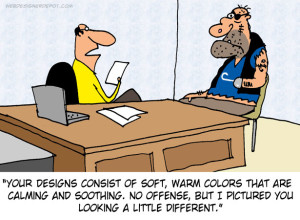 There are many things to look out for when creating an engaging website, but most important of all is your homepage design.
There are many things to look out for when creating an engaging website, but most important of all is your homepage design.
Homepage is your visitors’ first impression of you and your business – and first impressions are very important to get right. We all know people judge books by their covers, and even though having ‘pretty’ websites help, to set yourself apart from your competitors, you need to aim for more.
In four words: you need to shine.
Here are six tips to designing a small business homepage that shines:
1. No clutter, please. You don’t want to confuse and frustrate your visitors, so keep things simple and to-the-point. Your homepage needs to communicate your brand, your vision and your offerings all at one glance so that visitors instantly know what you’re selling. Write a nice tagline that summarises your business, pick four or five of your best offerings to feature and have them accompanied by stand-out images or catchy slogans.
2. Invest on best images. Whether you use photography or vector graphics or artwork, your homepage needs to display the best quality images that grab your audience’s attention. Try to avoid using stock photography and get a professional photographer to take photos of your café and your food and beverages if you can. Avoid enlarging icons when they are not resizable to avoid using blurry graphics that could make your site look amateurish. If you have don’t have pretty images, get the point across with beautiful typography.
3. Be unique. In all honesty it isn’t that hard to be unique because being unique means being you, and the only individual who knows how to be you is… you. Use images and words that relate to your business proposition. Use colours and themes that are consistent with your brand. Your business is your passion and if you let it shine, it will rub off positively on everyone who comes to you.
4. Organise your links. Sometimes you just can’t cramp all the details of your products and services in a few words no matter how hard you try. This is okay. All you need to do is link them to a more detailed information where your audience can get a full picture of all you offer. Include a straight-forward set of links in the navigation menu—usually placed at the top—and keep to a maximum of five or six. These tabs are a good place to start: about, product, news. In other words, people need to know what your business is all about, how they can participate and what’s current.
5. Keep it up-to-date. There’s nothing worse than having outdated information on your website, and worse – broken links. We have seen enough of those, we go into a long epileptic episode each time we encounter one. If you no longer sell the baby dress in red, don’t keep it in your online shop unless your aim is to frustrate your customers with empty promises. If you maintain a blog, keep posting new material or else your visitors will think you’re no longer around. Avoid references to time in information about you and your business, things such as “Sir John graduated from Knighthood four years ago…” when Sir John is now a king need to be rewritten to avoid having to update the text every year.
6. Have fun! Always aim to elicit positive reaction from your visitors by having fun with them. Pepper your text with playful descriptions, use happy images to brighten their days, give your visitors something to remember by including fun props that encourage them to interact with you (e.g. hover your mouse on these cats on Sydney Catsitters)… the possibilities are endless! The more you grab your visitors’ attention the more likely they will engage you and your services.
We can help design your homepage to suit your brand, and even provide custom photos and images for your business. So get in touch!
Author: Lydia Kurnia
